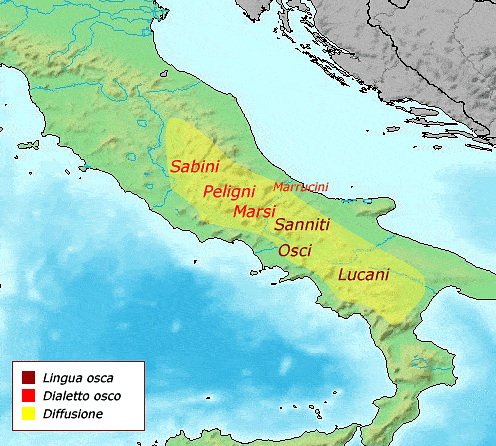
Angitia, which also appears epigraphically as Angita, Arigitia or Anguita, was a goddess among the pre-Roman Italic and Oscan-Umbrian peoples of central Italy and believed to have persisted as a domestic cult figure well into the Roman Republic.
The Roman poet Virgil wrote that one such pre-Roman Italic tribe known as the Marsi, who resided in the modern day Abruzzo region of central Italy, claimed descent from a daughter of the legendary Colchian King Aeëtes. This daughter, according to the Roman historian Gnaeus Gellius, was known as Angitia, the third of King Aeëtes' daughters alongside Medea and Circe. Medieval scholars believed that Angitia and Medea were the same person, as Arigitia was recorded by Silius Italicus and later Servius Honoratus as the name Marrubians first gave Medea upon her flight from Colchis to Italy, where she notably taught locals her healing arts. Angitia and Medea share this uncommon knowledge of the magical arts and herbal curatives, and Angitia, like Medea, is said to have taught the Marsi to cure fevers and snakebites. Ovid recounts how in his time Marsi would arrive on the streets of Rome to sell herbal preparations, cures and demonstrate their mastery over wild animals like wolves and snakes. Like their ancestors, contemporary Abruzzese serpari also claim power over serpents and hereditary immunity from serpent-bites.
Abruzzese folklore preserves the legend that Angitia was once a Greek priestess who built her home on the shores of ancient Lake Fucino, and taught locals the secret art of snake charming, snake-bite cures, divination and healing. For this, shrines were built in her honour, and snakes were offered as sacrifices by those seeking healing. This folk tradition is supported by inscriptions at Luco dei Marsi (known to the Romans as Lucus Angitiae), the sacred grove of Angitia. Her name also appears on a dedicatory cippus from Civita d'Antino, in the Umbrian Iguvine Tablets, and in inscriptions in the territories of the Paeligni, Vestini, and Sabines - all of which attest to her popularity in these regions.
The Romans derived the name Angitia/Anguita from anguis, which referred to snakes and snake-like eels appearing in her representations throughout Italy. This association of snakes with healing is widespread in the Greco-Roman world, as demonstrated in cultic representations of Asclepius, Hygieia, and Apollo.
